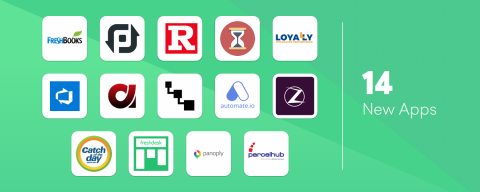Teams | Collaboration | Customer Service | Project Management
Freshworks
How To Improve Customer Experience With Data
Your customers expect you to understand what they want. Not only this, they expect you to know when they want and how they want it. Today, the modern company has no reason for not being able to deliver on these demands. The reason? Data. Data is everywhere, and businesses are well placed to utilize this to improve the customer experience and smash their KPIs. Over 40% of marketers plan to expand their data-driven budgets, and that’s why it’s essential to adopt a data-driven strategy.
Why Is It Important for Your Customer Support Agents to be Happy
It’s well known that if someone is an excellent fit for a support role, they are empathetic and kind to those around them. As empathetic people, support employees tend to take on the emotions of all of the customers1 that they talk to. Not only that, but as people trained in detecting and responding effectively to emotions, support people may even be prone to their own feelings being deeper and more intensified2.
How Automated Customer Service Can Improve Your Support
While one minute doesn’t seem like a lot, when it comes to solving problems – conversations with support agents can feel long and drawn out. This can be particularly frustrating when the issues are trivial in nature. There are many situations where customers spend 5-10 minutes on the phone just to find out basic information, such as learning a product’s return policy.
Truly Embrace Customer Appreciation with Freshdesk's AI-powered Thank You Detector
You have just started work and your calendar looks packed for the rest of the day. There are several tickets in the queue and you start resolving them one-by-one. A frustrated customer reports an issue. You help the customer out and update the status of the ticket to “resolved”. Job well done.
How To Improve Customer Service With Helpdesk Automations
No matter the industry, region or product — the true goal of all customer support teams is not just to provide assistance when a customer reaches out, but to deliver moments of ‘wow’ to each customer. However, as the importance of great support grows, so does its complexity. Customers can now reach out through emails, calls or live-chat, follow-up on social media, leave reviews on public forums and they expect regular updates to keep track of their issue.
Get These Freshworks Marketplace Apps to Simplify Your Tasks
Welcome to yet another app round-up where we have put together some of the recently added Marketplace apps. We are on the road to reaching 800 apps across our three flagship products—Freshdesk, Freshservice, and Freshsales—by the end of this month. And very soon, you will be able to view and access Freshchat apps on the Marketplace. In the meantime, let’s take a look at the dozen-odd apps that have hit the Marketplace these past few weeks.
Rocketium's Secret Sauce to Customer Support
Rocketium is a cloud-based software that lets users create, automate, and edit their own videos with text, images, voiceovers, footage, and motion graphics. When I added their brand’s email as an example in one of my articles, their CEO, Satej Sirur was kind enough to give us a thumbs up. Fast forward to today, here’s a detailed secret sauce interview on how customer support works at Rocketium, the tools they use, the strategies that have made them successful, and much more.
Chatbot Vs. Live Chat: Which Is Winning The Customer Service Game & Why?
Implementing live chat in business websites increased average order value by 14%1 and website pages views per session to 263%. 51%2 customers prefer chatbots in customer support over emails, given they are easy to communicate to. Both these statistics project a very welcoming stance for the respective channels. But which one is preferred over the other? Will live chat benefit your business the most, or will a chatbot do the trick for you?
5 Ways to Simplify Customer Service
With new tools available in the market to customers and customer service professionals alike, the relationship between both has become both easier than ever, and the most confusing it has ever been. Customers can now spend minutes (or sometimes hours!) looking for the correct channel to address their questions, while customer support agents are tracking dozens of metrics in an attempt to understand the customer better.











